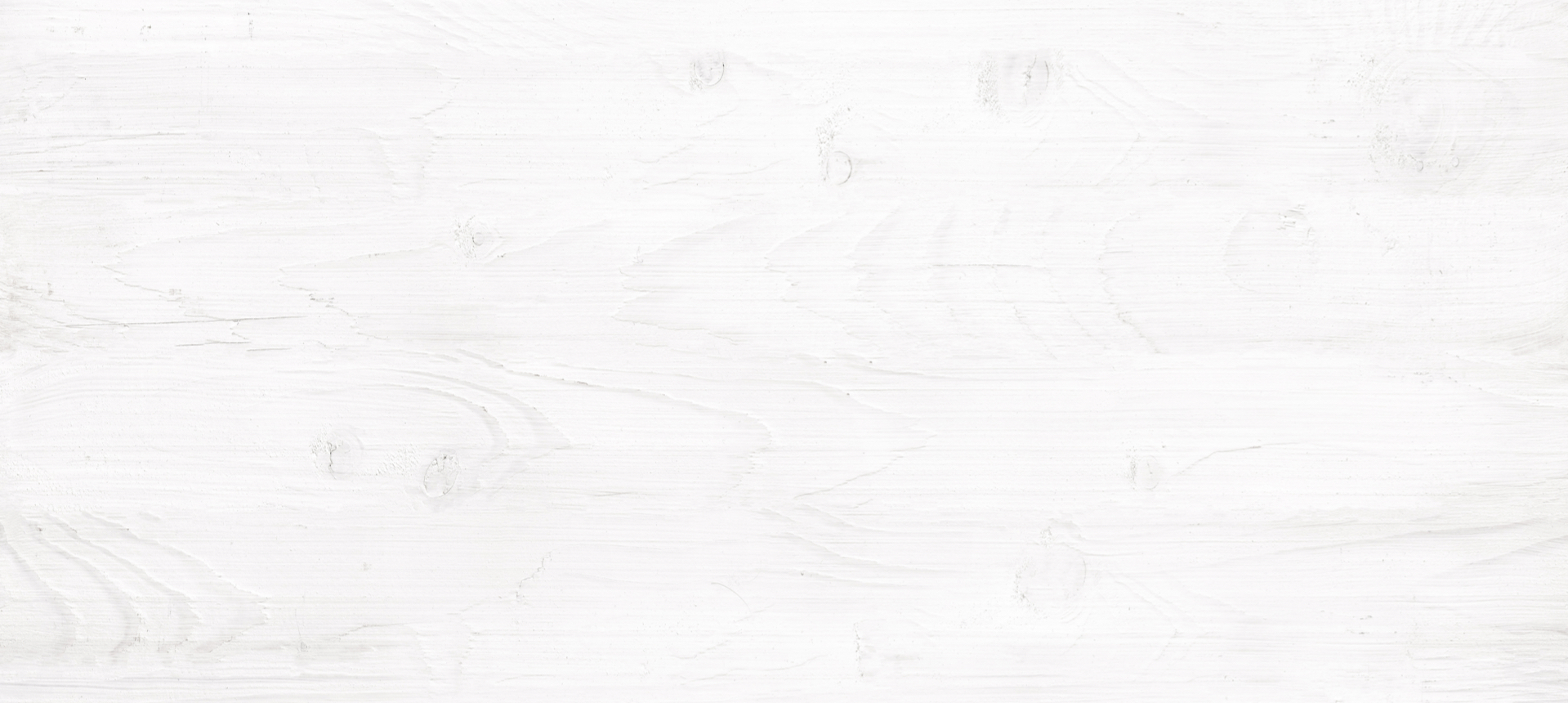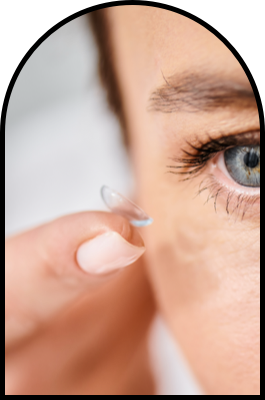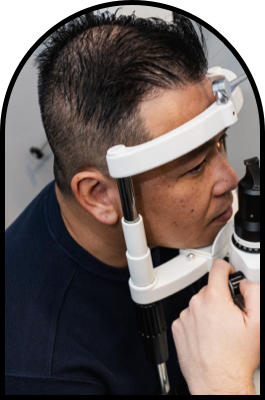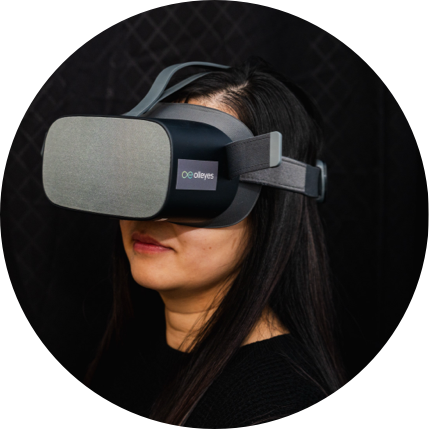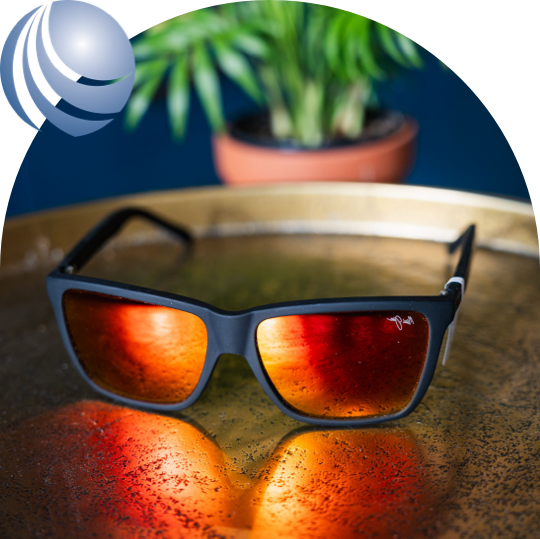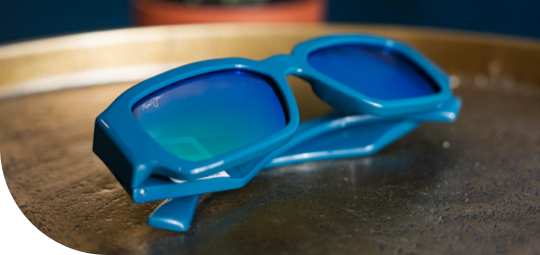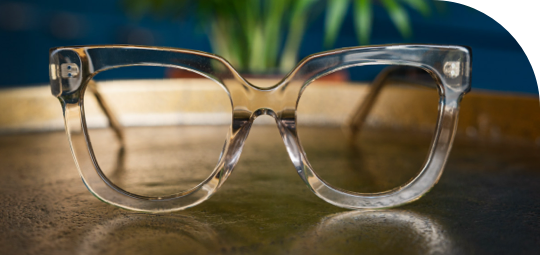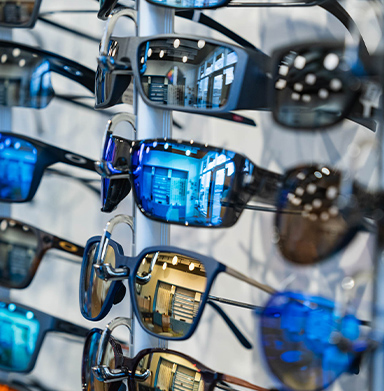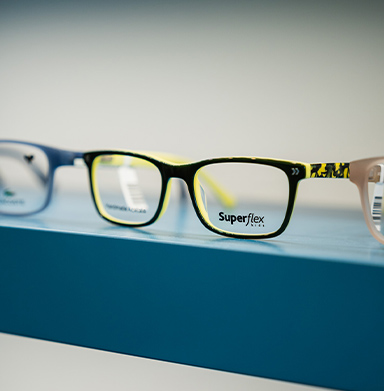Experiencing eye pain when you blink can be both uncomfortable and worrying. It’s important to understand the potential causes of this discomfort in order to address the issue effectively.
The various reasons why your eye might hurt when you blink includes:
- Dry eyes
- Eye infection
- Foreign objects in the eye
- Corneal abrasion
- A stye or chalazion
- Eye strain
- Sinus infection
At Chestermere Optometry, we are dedicated to providing you with the highest quality eye care. Whether you’re experiencing discomfort or just need a routine eye exam, our team of experienced optometrists is here to help.
Common Causes of Eye Pain When Blinking
Dry Eyes
Dry eyes are a prevalent cause of discomfort, especially when blinking. This condition occurs when your eyes don’t produce enough tears, or the quality of tears is poor, leading to inadequate lubrication of the eye surface.
Solution: To manage dry eyes, start by using over-the-counter artificial tears to keep your eyes moist. It’s also essential to stay hydrated and take regular breaks from screens to reduce strain. Creating an optimal environment by using a humidifier and avoiding direct airflow from fans or vents can help maintain eye moisture. If over-the-counter solutions don’t provide relief, consult an eye care professional for further evaluation and possibly prescription treatments tailored to your specific needs.

Eye Infection
Conjunctivitis can be caused by bacterial or viral infections and, in some cases, by allergens or irritants. These infections lead to inflammation of the conjunctiva, the thin, transparent layer of tissue that lines the white part of the eye and the inside of the eyelids.
Solution: If you suspect you have conjunctivitis, consult a healthcare professional for a proper diagnosis and treatment plan. For bacterial conjunctivitis, antibiotic eye drops or ointments are typically prescribed to eliminate the infection. Viral conjunctivitis, on the other hand, usually resolves on its own, but antiviral medications may be prescribed in severe cases.
To manage symptoms and prevent the spread of infection, practice good hygiene by washing your hands frequently, by not touching your eyes, and by not sharing personal items like towels or makeup.
Foreign Object in the Eye
A foreign object, such as an eyelash, dust, or debris, can cause significant irritation and pain when you blink. The eye’s natural defense mechanisms, including tears and blinking, typically work to flush out these small particles. However, when a foreign object becomes lodged under the eyelid or on the surface of the eye, it can create intense discomfort and even pose a risk of scratching the cornea.
Solution: If you experience irritation from a suspected foreign object, follow these steps:
- Rinse Your Eye: Use clean water or a saline solution to gently rinse your eye. This can help wash out the object. You can use an eye cup or simply pour water over the eye using a clean container.
- Blink Repeatedly: Blinking can help move the object towards the corner of the eye, making it easier to remove.
- Avoid Rubbing Your Eye: Rubbing can increase irritation and may push the object deeper into the eye or cause a scratch on the cornea.
- Inspect Your Eye: If possible, check your eye in a mirror or have someone else look for the object. Carefully pull down the lower eyelid and lift the upper eyelid to inspect underneath.
If these steps do not alleviate the pain or if you cannot remove the object, seek medical attention immediately.
Corneal Abrasion
A scratch on the cornea, known as a corneal abrasion, can be extremely painful, especially when blinking. Even minor abrasions can cause significant discomfort due to the high density of nerve endings in this area.
Solution: If you suspect a corneal abrasion, follow these steps:
- Seek Immediate Medical Care: It’s essential to consult an eye care professional as soon as possible. Delaying treatment can increase the risk of infection or further damage.
- Avoid Touching Your Eyes: Touching or rubbing your eyes can exacerbate the injury and introduce bacteria, leading to infection.
- Follow Prescribed Treatment: Your eye care provider may prescribe antibiotic ointments or drops to prevent infection and promote healing.
- Protect Your Eyes: Wear sunglasses to shield your eyes from bright light and further irritation. Follow all aftercare instructions provided by your healthcare professional diligently.
- Monitor Symptoms: Keep an eye on your symptoms. If you notice increasing pain, discharge, or any changes in your vision, seek further medical attention promptly.
Corneal abrasions usually heal within a few days with proper care, but it’s crucial to take any eye injury seriously to prevent complications.
Stye or Chalazion
A stye and a chalazion are common eyelid conditions that can cause localized pain and swelling, making blinking uncomfortable.
Stye (Hordeolum): A stye is an infection of the oil glands in the eyelid, usually caused by bacteria such as Staphylococcus aureus. It often appears as a red, swollen, and painful lump near the edge of the eyelid.
Chalazion: A chalazion is a blocked meibomian gland that leads to a non-infectious lump on the eyelid. Unlike styes, chalazia tend to develop further from the margin of the eyelid and grow more slowly. .
Solution: To manage both styes and chalazia, follow these steps:
- Apply Warm Compresses: Use a clean cloth soaked in warm water to apply gentle pressure to the affected area. Do this several times a day for about 10-15 minutes each session. The warmth helps to soften the oils in the blocked glands, reducing swelling and promoting drainage.
- Avoid Squeezing or Popping: Do not attempt to squeeze or pop a stye or chalazion. This can worsen the infection, spread bacteria, and potentially cause further complications.
- Maintain Eyelid Hygiene: Keep your eyelids clean to prevent further infections. You can use a mild, diluted baby shampoo or a specialized eyelid cleanser to gently wash the eyelid area.
- Over-the-Counter Pain Relievers: To manage pain and reduce inflammation, consider using over-the-counter pain relievers such as ibuprofen or acetaminophen.
- Avoid Eye Makeup and Contact Lenses: Refrain from using eye makeup and contact lenses until the stye or chalazion has healed.
- Monitor Symptoms: If the stye or chalazion does not improve within a week, grows larger, or becomes more painful, seek medical attention.
Eye Strain
Prolonged use of digital devices can lead to a condition known as digital eye strain or computer vision syndrome. This condition arises from the extended focus on screens, which requires the eyes to work harder and can cause significant discomfort when blinking.
Solution: To alleviate digital eye strain and reduce discomfort, follow these guidelines:
- Follow the 20-20-20 Rule: Implementing this simple yet effective rule can help reduce eye strain. Every 20 minutes, take a break and look at something 20 feet away for at least 20 seconds.
- Proper Lighting: Make sure your work environment is well-lit to minimize glare and reflections on your screen.
- Maintain Good Posture: Make sure that your screen is at eye level and about an arm’s length away. Keep your feet flat on the floor, back straight, and shoulders relaxed.
- Take Regular Breaks: Incorporate short breaks into your routine to rest your eyes and stretch your body. Stand up, walk around, and perform simple stretches to relieve muscle tension.
- Blink More Often: Make a conscious effort to blink more frequently to keep your eyes moist. Consider using artificial tears if your eyes feel particularly dry.
Sinus Infection
Sinus infections, or sinusitis, can cause pressure and pain around the eyes, especially when blinking. This discomfort occurs because the sinuses are located close to the eyes, and inflammation in these cavities can lead to referred pain.
Solution: To alleviate sinus infection symptoms and reduce eye pain, consider the following treatments:
- Decongestants: Over-the-counter decongestants can help relieve nasal congestion and reduce sinus pressure.
- Nasal Sprays: Saline nasal sprays can help keep nasal passages moist and clear out mucus. Steroid nasal sprays can reduce inflammation and are particularly effective for chronic sinusitis.
- Antibiotics: If a bacterial infection is suspected, a healthcare professional may prescribe antibiotics. It’s important to complete the entire course of antibiotics to fully eradicate the infection.
- Pain Relievers: Over-the-counter pain relievers can help manage pain and reduce inflammation.
- Humidifier: Using a humidifier in your living space can add moisture to the air, which helps ease sinus congestion and keeps the nasal passages from drying out.
- Stay Hydrated: Drinking plenty of fluids helps thin mucus, promoting drainage and reducing congestion.
- Warm Compress: Applying a warm compress to the face, particularly around the nose, cheeks, and eyes, can help soothe pain and promote mucus drainage.
- Elevate Your Head: Sleeping with your head elevated can help sinus drainage and reduce congestion.
If symptoms persist for more than a week, worsen over time, or are accompanied by a high fever, severe headache, or vision changes, seek medical attention.
When to See a Doctor
While some causes of eye pain when blinking can be managed at home, it’s important to seek medical attention if:
- The pain is severe or persistent
- You experience sudden changes in vision
- There is significant redness or discharge
- Your eyes are sensitive to light
- You have a history of eye conditions or recent eye surgery
Take Care of Your Eyes for a Pain-Free Blink
Understanding why your eye hurts when you blink is the first step towards finding relief. Whether it’s due to dry eyes, an infection, or a foreign object, identifying the cause will guide you to the appropriate treatment. Remember, your eyes are delicate and vital organs—don’t hesitate to seek professional medical advice if you’re unsure about the source of your discomfort.
Your eyes deserve the best—trust Chestermere Optometry with your vision care needs. Don’t wait to prioritize your eye health, schedule your eye exam today and see the difference clear vision can make!



